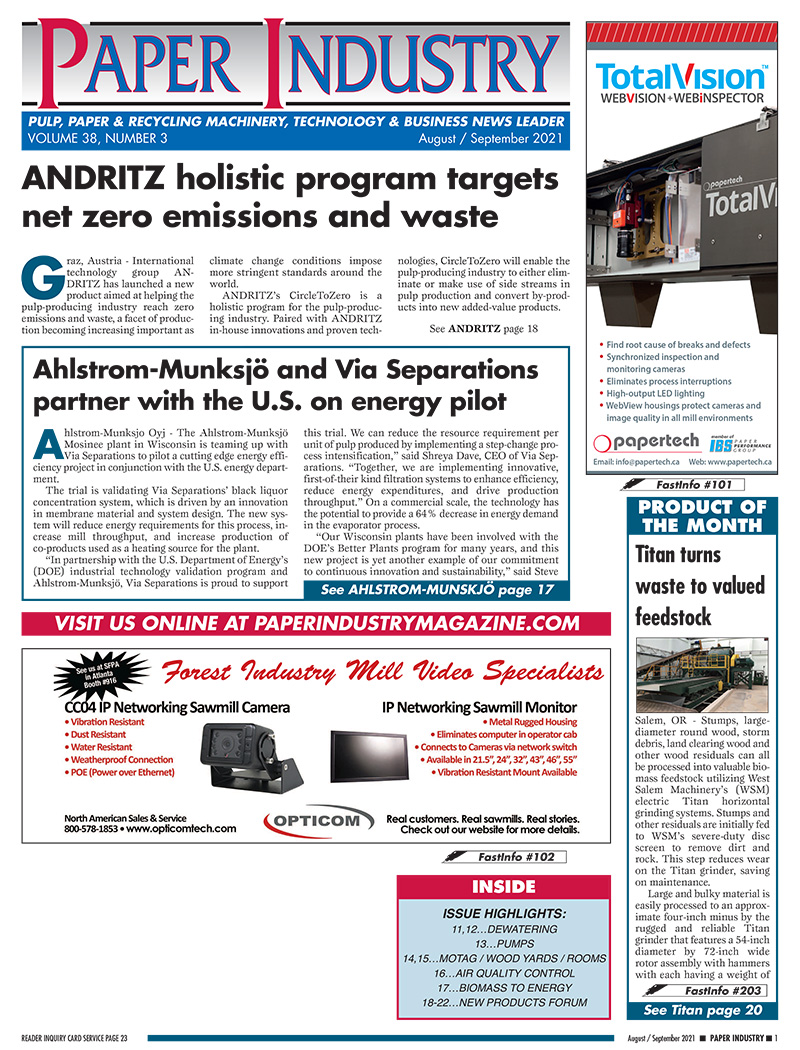BC Hydro-funded studies lead to pump upgrades Harmac Pacific’s pulp mill in Nanaimo, B.C.

Nanaimo, B.C. - The pandemic provided a Vancouver Island pulp mill with the opportunity to carry out some upgrades and innovations including its pumping system.
Harmac Pacific’s pulp mill in Nanaimo produces high quality kraft pulps and is run by the employees who took the mill out of bankruptcy in 2008, gradually increasing production and carrying out upgrade work. In 2010-2011, capital upgrades brought the mill’s production up to 365,000 tonnes per year.
Alessandro Deviato, the BC Hydro-funded industrial energy manager at Harmac Pacific, saw the opportunity during the pandemic to use BC Hydro funded industries studies program to explore potential ways to increase mill efficiency.
Deviato said: “There were no large capital projects, so I had time to take advantage of BC Hydro-funded programs to focus on future projects.”
Deviato managed to get eight studies funded – six efficiency studies and two low carbon electrification (LCE) studies leading to mill improvements.
One of the gains was an energy study that led to several pump upgrades. The project involved downsizing some older pumps that were repurposed from another part of the mill. Another involves adding variable frequency drives (VFDs) to processes with older control valves. “VFDs will give us much more control over the motor speed and flow of the process fluid, plus they’ll save us energy,” he says.
There’s also a much bigger project involving four massive 800hp pumps that control all of the mill’s effluent. “We’ve been aware that they’re not very energy efficient for some time, but they do a sensitive job and they do it well. The last thing we’d want is some kind of overflow, so we’ve always approached them with caution. But with BC Hydro’s incentive, we were able to spend some dedicated time looking at the issue to understand what needed to happen and how much it would cost. It’s mainly control-based: revamping the controls so everything runs more efficiently, along with upgrading two of the four pumps to common VFD technology,” he said.
Another aspect of Deviato’s LCE studies led to lowered emissions. A two-phased approach takes waste heat from the mill’s sewers and runs it through industrial heat pumps to raise the temperature. The heat is then used in a belt dryer to help evaporate the water off the hog before it goes into the boiler. The project increases the mill’s electrical load but reduces the amount of supplementary gas required for the boiler, lowering emissions – and Harmac’s carbon tax – in the process.
Another aspect of Deviato’s LCE studies led to lowered emissions. A two-phased approach takes waste heat from the mill’s sewers and runs it through industrial heat pumps to raise the temperature. The heat is then used in a belt dryer to help evaporate the water off the hog before it goes into the boiler. The project increases the mill’s electrical load but reduces the amount of supplementary gas required for the boiler, lowering emissions – and Harmac’s carbon tax – in the process.
Other areas the studies improved were in HVAC, compressed air reduction, and lighting.






